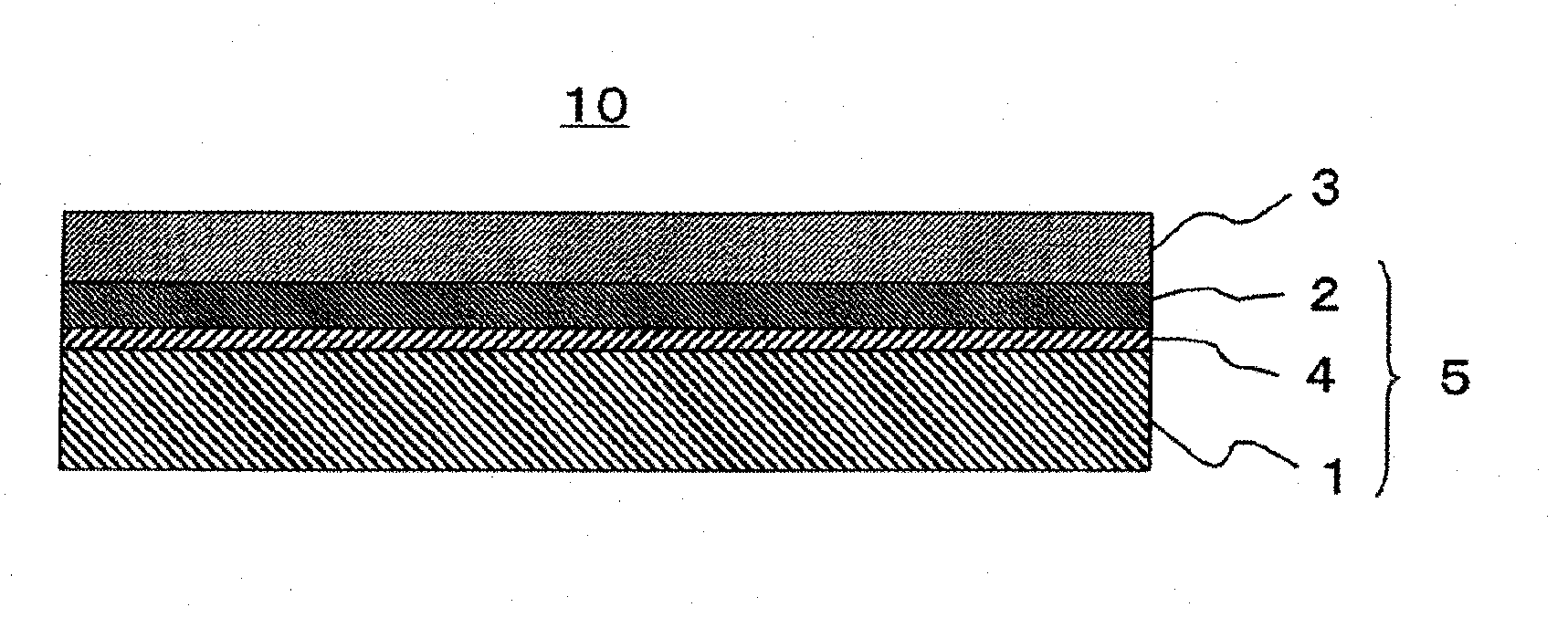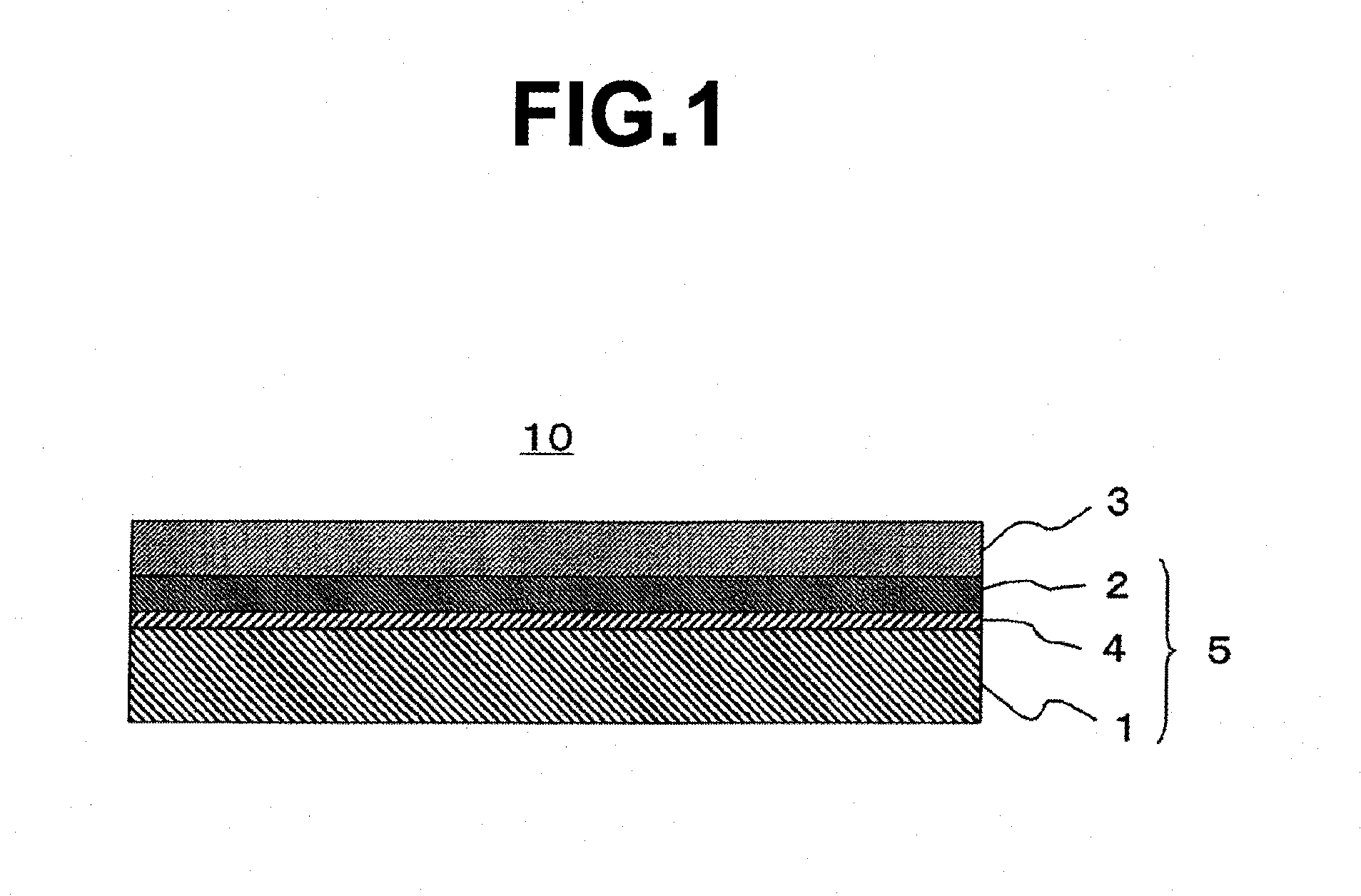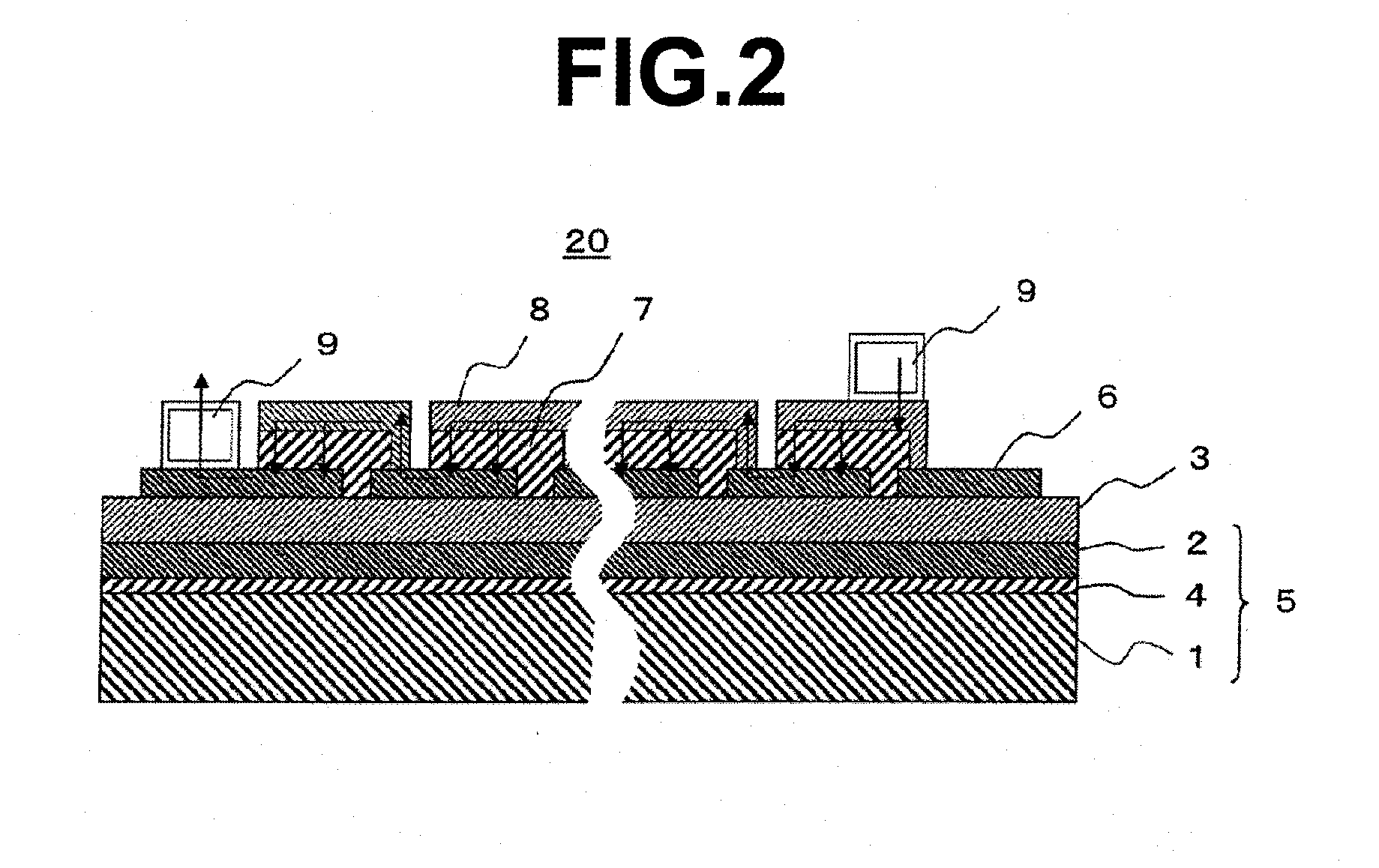Polyimide layer-containing flexible substrate, polyimide layer-containing substrate for flexible solar cell, flexible solar cell, and method for producing same
a technology of flexible solar cells and polyimide layers, which is applied in the direction of final product manufacturing, climate sustainability, and metallic material coating processes, etc., can solve the problems of poor flexibility, large risk, and fragile glass substrates, and achieve good photovoltaic efficiency, prevent permeation and/or diffusion of metals, and heat resistance. high
- Summary
- Abstract
- Description
- Claims
- Application Information
AI Technical Summary
Benefits of technology
Problems solved by technology
Method used
Image
Examples
first embodiment
[0039]An embodiment of the present invention will be explained by using FIG. 1. A first embodiment of the present invention is a polyimide layer-containing flexible substrate 10 which has a metal substrate configured by a metal foil 1 of ordinary steel or stainless steel (hereinafter, abbreviated as SUS) having a coefficient of thermal expansion in a plane direction of not more than 15 ppm / K and a polyimide layer 3 formed on the metal substrate and having a layer thickness of 1.5 to 100 μm and a glass transition point temperature of 300 to 450° C.
[0040]Polyimide alone cannot secure a barrier property, particularly a barrier property against moisture, oxygen, or other gas ingredient, therefore unless a barrier film is separately provided, the function falls due to invasion of a gas ingredient or other ingredient derived from an external environment, therefore this is insufficient in suitability as the substrate of a device. Further, polyimide alone is not always sufficient in strengt...
second embodiment
[0045]It is known that, in a CIGS solar cell, if diffusion of metal elements, particularly Fe atoms, into a power generation layer occurs, the conversion efficiency falls. When not glass, but a metal is used for the base material, prevention of diffusion of Fe atoms becomes particularly important. In order to solve this problem, as a second embodiment of the present invention, rather than directly laminating a heat resistant polyimide on the metal foil 1 made of ordinary steel or SUS, a polyimide layer-containing flexible substrate comprising a metal substrate which is provided with a metal foil 1 made of ordinary steel or SUS on the surface of which a metal layer made of one of copper, nickel, zinc, or aluminum or an alloy layer of the sane (hereinafter referred to as a “metal layer or alloy layer 2”) and a polyimide layer 3 which is formed on the metal layer or alloy layer 2, has a layer thickness of 1.5 to 100 μm, and has a glass transition point temperature of 300 to 450° C. may...
third embodiment
[0049]With metal foil provided with an aluminum (hereinafter, sometimes abbreviated as “Al”)-containing metal layer which is produced according to the prior art, the flexibility tends to fall compared with metal foil provided with a Cu-containing, Ni-containing, or Zn-containing metal layer. This is because, generally, when a metal layer or alloy layer 2 which is formed by aluminum or by plating mainly using aluminum is formed on a ordinary steel layer or SUS layer, an Fe—Al-based alloy layer 4 (for example FeAl3, Fe2Al8Si, FeAl5Si, or another intermetallic compound) is formed in a layer state at an interface between the metal foil 1 made of ordinary steel layer or SUS and the Al-containing metal layer or alloy layer 2. This Fe—Al-based alloy layer 4 is very hard and brittle. Therefore, if the plated steel or SUS is subjected to extreme elastic plastic deformation at handling or the like, this Fe—Al-based alloy layer 4 cannot follow the deformation of the metal foil layer 1 and, fin...
PUM
| Property | Measurement | Unit |
|---|---|---|
| glass transition point temperature | aaaaa | aaaaa |
| thickness | aaaaa | aaaaa |
| surface roughness | aaaaa | aaaaa |
Abstract
Description
Claims
Application Information
 Login to View More
Login to View More - R&D
- Intellectual Property
- Life Sciences
- Materials
- Tech Scout
- Unparalleled Data Quality
- Higher Quality Content
- 60% Fewer Hallucinations
Browse by: Latest US Patents, China's latest patents, Technical Efficacy Thesaurus, Application Domain, Technology Topic, Popular Technical Reports.
© 2025 PatSnap. All rights reserved.Legal|Privacy policy|Modern Slavery Act Transparency Statement|Sitemap|About US| Contact US: help@patsnap.com



